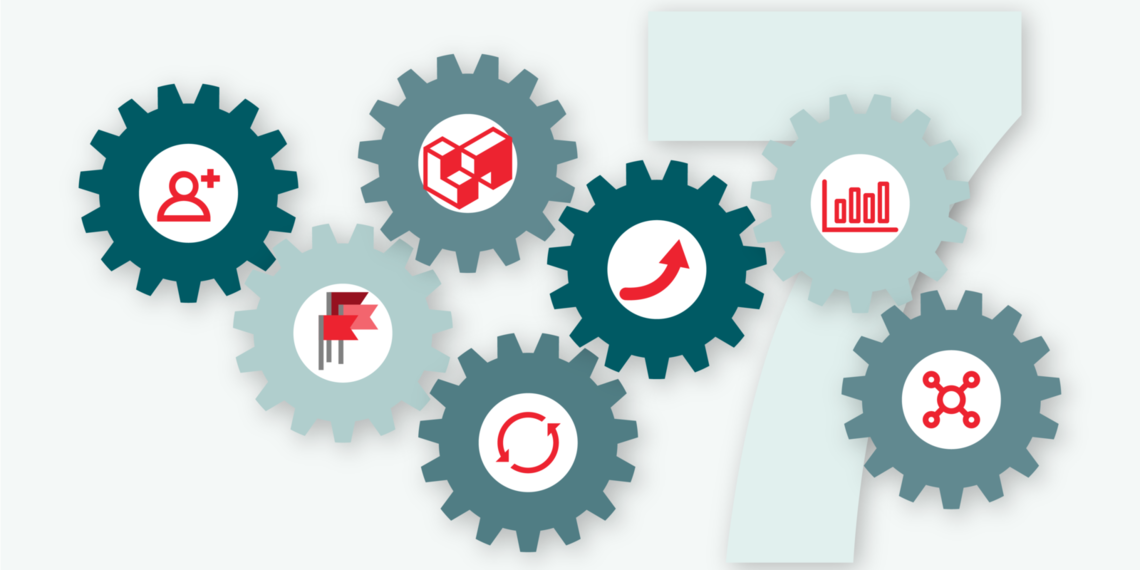Value management explained
How does University of Utah Health improve the quality of care we deliver to our patients? We integrate the best principles, methods and structures drawn from other highly successful industries around the world. To name a few, these include the standards designed by the International Organization of Standardization, ISO 9001, process improvement drawn from lean/Six Sigma/PDCA, world class data and analytic platforms, and safety science methods. Collectively put together in a way that is uniquely “Utah,” we call the adoption of these principles and structures our Value Management System.
Delivering high-quality care during the Covid pandemic has reinforced our commitment to these principles and supported our ability to adapt. Our Value Management System is based on the pillars of respect and continuous improvement and seven guiding principles:
1. Focus on the patient.
In addition to building a system and culture that ensures safety to our patients, we systematically gather feedback from our patients to understand their current and future needs and expectations and we rigorously assess the outcomes and costs of individual patient care. We then continually seek to improve the experience of care provided to our patients.
Example: “How to Sustain your Patient Experience Culture”— Pati Colvin and Teresa Stone
2. Provide leadership to the organization.
Our leaders at all levels establish unity of purpose. Leaders ensure that all strategies, policies, processes and resources are aligned to pursue common direction and achieve our shared objectives: serve communities and our region, advance equity, diversity, and inclusion, lead education and discovery, and innovate care accountable for outcomes.
Example: "Five Ways to Practice Trauma-Informed Leadership” -Susan Pohl, Rebecca Larsen, and Sarah McCormick
3. Engage and involve people.
We have built an organization of competent people who we manage through empowerment; engaging their expertise and effort to improve the organization and recognizing their achievements and contributions.
Example: "The Culture Advantage: How EVS Transformed Room Turn Time" — James Mwizerwa and Cooper Riley
4. Use a process approach.
We use a process approach to manage our performance. This means that our leaders manage their processes, the interactions between these processes, and the inputs and outputs that tie these processes together. This also means that we manage these processes as a coherent value management system.
Example: "Quality Improvement and Patient Safety Toolkit” — Luca Boi and Ryan Murphy
5. Encourage improvement.
We focus on and promote improvement. We know that improvement is essential to maintain our current levels of performance, respond to a rapidly changing external environment, and to identify, create and succeed in new opportunities. A glance back to the last two years of Covid shows how quickly we adapt our care.
Example: "How ARUP Makes it Safe for Teams to Thrive in Complexity” — Iona Thraen, Kim Mahoney, Isaac Holyoak, Tracy Hernandez, Michael Bevan, Lincoln Hirayama, Arthur Moes, Eric Peterson, Peta Owens-Liston, Mark Astil
6. Make data driven decisions.
We make decisions using data. We know our decisions are data driven when we gather multiple types of input from multiple sources, identify facts, objectively analyze data, examine cause and effect relationships, and consider potential unintended consequences.
Example: "Right Tool, Right Team: The Power of Predictive Analytics" — Jeff Young
7. Manage our organizational relationships.
We carefully manage relationships with our suppliers, partners and other interested parties. These relationships can influence our performance and either undermine or strengthen our success.
Example: "Don’t Get Lost in Translation: Expert Advice for Caring for Patients of Refugee Background"— Anna Gallegos
Continuous improvement of care
The principles are just one piece of a complex system to support the continual improvement of our care delivery.
University of Utah Health has been ISO-9001 certified since 2016 and receives ongoing accreditation from DNV. This important (and comprehensive) external review of our work to date is validating that we are moving the organization to a more reliable delivery of world-class health care.
Need Help?
- The U of U Health Accreditation Home Page on PULSE
- Quick List of Tools, Games, and Infosheets to Be Prepared
This article and supporting links are updated annually as part of U of U Health's commitment to continuous system improvement. Original post date January 9, 2017.
Sandi Gulbransen
Why do some organizations thrive during a crisis while others flounder? Iona Thraen, director of patient safety, joined forces with her ARUP Laboratory colleagues to learn how the world-renowned national reference lab adapted to the pandemic. Leaders created a culture of safety by putting innovation, learning, and patient-centered care at the heart of all their efforts.
Finding evidence to change the status quo isn’t easy; thinking about evidence in terms of how it persuades—whether subjective or objective—can make it easier. Plastic surgery resident Dino Maglić and his colleagues followed their guts and saved money by improving the laceration trays used to treat patients in the emergency department.
In an organization as big as U of U Health, it’s hard to know where our work fits into the big picture. System Planning Manager Cassandra Taft highlights five ways teams can meaningfully contribute to Operational Plan priorities, regardless of job role or responsibility.
